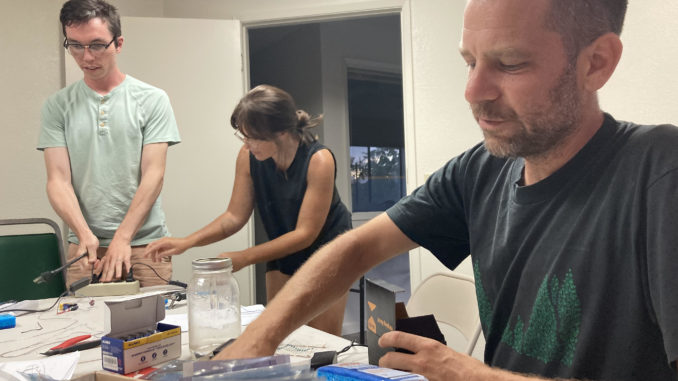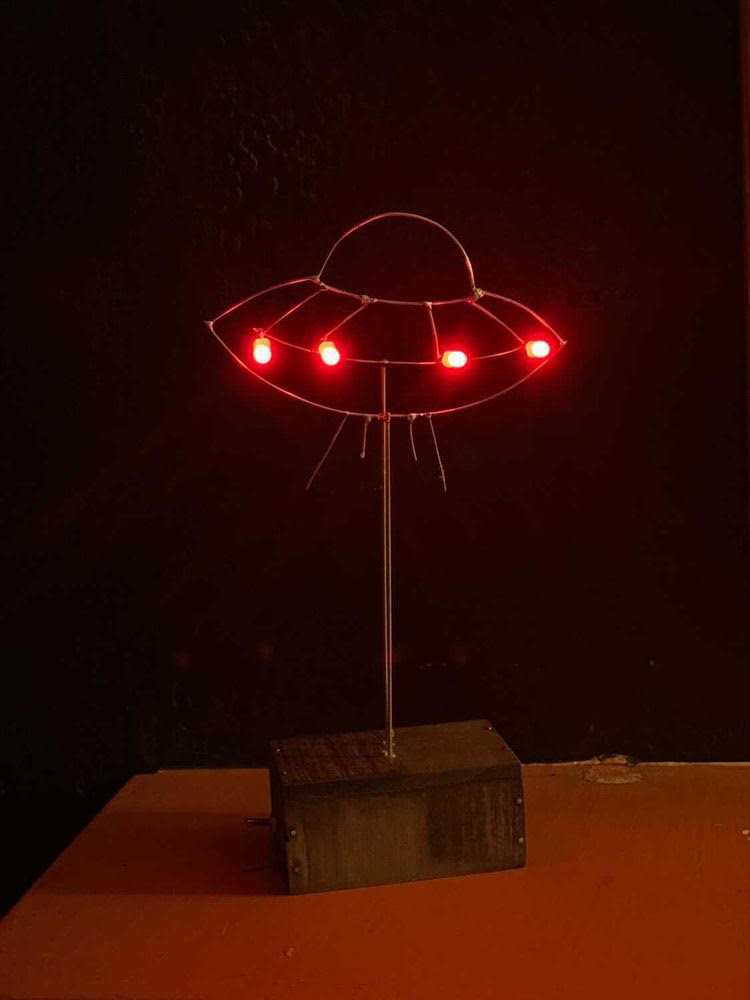

Chico suffered many cultural losses during the pandemic, and among the most mourned in activist and artistic circles was the closure of Blackbird. Though ostensibly an anarchist bookstore that served coffee, the little yellow Victorian building was more than just a cafe, live music venue and purveyor of leftist reading material to those who frequented it; it was a place to meet, scheme, organize and build community.
It was also a space for learning, and Blackbird frequently hosted skillshare workshops where participants could learn everything from screenprinting to how to help stop lethal drug overdoses.
Recently, a new spot sprung up in South Chico dedicated to some of those ideals—particularly community-building. The Loiter Club (just a few blocks down Park Avenue from Blackbird’s old location) is a new shared collective space based on the ideal of community care in its many forms.
“The vision for the space is essentially a community-care collective and expanding on the ideas of what community care includes,” said Marin Hambley, one of the founders. “The core values are meeting people where they’re at, using harm reduction in anything we do and creating a space where all people feel safe and good.”
The bottom floor of the two-story building serves as the new home of North Valley Harm Reduction Coalition, which provides physician-led services to people struggling with addiction. The top floor is a shared workspace for a growing group of artists, professionals and assorted care providers, as well as a venue for sharing skills with the community.
Sharing is caring
The Loiter Club recently hosted its first Art Camp, featuring various skillshares taught by members of the collective, who also happen to be some of Chico’s most respected artists and makers. There were three courses: LED lighting and basic electronics (taught by shadow- and music-box maker Zak Elstein), painting (with musician and artist Michael Bone) and sewing (led by jewelry maker Claire Fong).

The classes were small and generally ran for one hour, weekly (for four to six weeks), to offer bite-sized bits of know-how in a manner palatable to even the most scholastically disinclined. All were hands-on and project-focused. Painting students walked away with finished pieces most weeks, sewing students made heating/cooling pads, and those in the electronics class each constructed a free-standing wire sculpture lit by LEDs.
All three teachers plan to offer another course in the fall and hope fellow collective members will step forward with new workshops.
Though providing practical skills and hands-on instruction, the philosophy behind the courses is different than the typical workshop model. For one thing, accessibility is a key factor, with prices kept low (between $60 and $80) and on a sliding scale to ensure no one is excluded due to cost.
“I feel like there should be more opportunities for skill-based learning for adults outside of like a college situation, which is expensive and can be hard to get started,” Elstein said. “This is meant to be cheap, easy and affordable. It’s also meant to be laid back and fun so everyone can learn with no pressure.”
Another low-barrier aspect of the workshops is that attendees of all skill levels are welcome to participate. Bone said enthusiasm is more important than experience, and his own zeal for painting was part of his motivation to teach at the Loiter Club. He said he paints daily since first picking up a brush in earnest less than two years ago, and he wanted to meet others with a similar passion for the medium.
“I don’t really know many other painters in town, so I wanted to expand my circle,” Bone said. “It’s inspiring to meet people who are so enthusiastic. Painting is like playing piano—you can always get better at it—so that enthusiasm to keep practicing and learning is way more important than having skills.”
Fong, who also teaches textile arts at Blue Oak School, said there’s a social justice element to her sewing class.
“I think it’s important that everyone know how to repair clothing and know the effort that goes into our clothing,” she said. “It’s really taken for granted, especially when there’s so much disposability in the fashion industry … it’s not sustainable.

“There is so much waste in the world, and the fashion industry is the second biggest polluter, right behind the oil industry,” she continued. “Fast fashion has created so much environmental destruction, and there’s also social justice implications with unfair labor practices and exploitation of workers in developing countries, especially with women and children.
“Just like with the kids I teach, I think it’s important for us all to learn where our clothes come from and how to take care of them.”
Teaching the teachers
Each of the instructors for the first three art camp classes had previous experience teaching in some capacity, yet each said they found the peer-to-peer format for classes at the Loiter Club to be inspirational and to have advanced their own education. Bone said the simple process of making weekly worksheets caused him to take a different perspective on his own learning process and ongoing work.
“I’d think, ‘Do I really want to teach people that—and why?’” he said. “It made me think critically about how I do things and why and how I can do them better, and that’s very valuable.”
Elstein said revisiting the basics had measurable, time-saving and anxiety-reducing effects on his own recent artwork.
“The last step in shadow boxes is when all the wires are hanging out of the back and I have to put them all together,” he said. “It can be really confusing and kinda chaotic, but after explaining circuits so often for a few weeks—and especially parallel circuits—it’s been crazy easy since that class.
“Normally I learn things by just plowing through them, so figuring out how to share the information made me sit down and think about it in a way I haven’t done before.
“I really enjoyed it,” Elstein said in summary. “You meet a bunch of new people and do something constructive and fun together … that’s kind of the whole point.”
The Loiter Club is at the corner of 18th Street and Park Avenue.

Be the first to comment